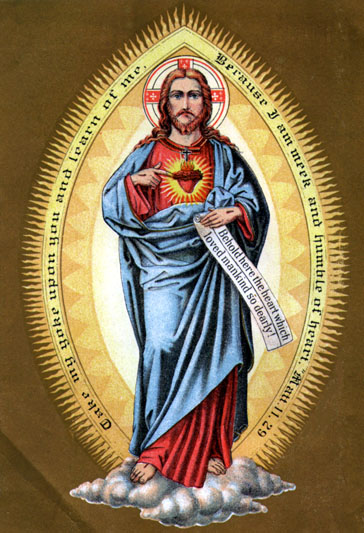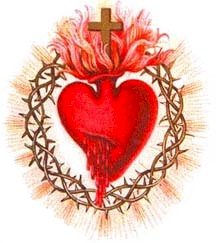
“Now the prince of this world will be cast out.” (Jn. 12:31)
Pope Saint John Paul II in his encyclical, Dives in misericordia, saw clearly the battle that lay ahead for a creation of a “civilization of love” and the means to achieve it. He wrote: “…at no time and in no historical period -especially at a moment as critical as our own – can the Church forget the prayer that is a cry for the mercy of God amid the many forms of evil which weigh upon humanity and threaten it…These ‘loud cries’ should be the mark of the Church of our times, cries uttered to God to implore His mercy, the certain manifestation of which she professes and proclaims as having already come in Jesus crucified and risen, that is, in the Paschal Mystery…of that love which is more powerful than death, more powerful than sin and every evil, the love which lifts man up when he falls into the abyss and frees him from the greatest threats.” (DM #15)
On October 7, 1571, military genius and ardent Catholic Christian, Don Juan of Austria, executed his great battle plan for the defeat of the Turks in the naval battle of Lepanto. Not only did Don Juan direct the combined fleets of the papacy, Spain, Venice and Genoa, but he placed them under the protection of the sacraments and the Blessed Virgin Mary. With crucifixes affixed to the mast of each ship and rosaries being recited throughout Christendom, the victory was theirs.
Now in the beginning of the third millennium of Christendom, the battle plan for the victory of Christianity over evil has been revealed to two nuns and three children: Saint Margaret Mary and devotion to the Sacred Heart of Jesus; three shepherd children of Fatima, Lucia, Francisco and Jacinta, and devotion to the Immaculate Heart of Mary; and Saint Faustina Kowalska and devotion to theDivine Mercy.
Jesus himself offered the Father praise for revealing hidden things to the merest of children. So it is with these revelations given from heaven to two religious sisters and three little children. God’s ways are not our ways. If we accept these messages from heaven, confirmed by the Church for their conformity to Sacred Tradition, then we, too, can gain wisdom that is considered foolishness by the world, but which can lead to salvation for ourselves and for that world. We would not want to stop at mere externals or sentimental enthusiasm for each devotion because each of the messages has an essence that guides us up the Christological ladder to holiness with true devotion and total consecration of our entire spiritual lives. The pious practices that are associated with each devotion dictated from heaven – for example, recitation of the rosary, adoration of the Sacred Heart in the Blessed Sacrament, and sacramental confession on the feast of Divine Mercy – are spiritual weapons and training practices that we can depend upon.
Each of the devotions begins in the human heart. “If only God would so seal my heart that nothing would ever enter there but his divine love, and nothing open it but charity.” So wrote St. Francis de Sales (XV, Letter 4/3/1611) expressing his personal conviction that holiness is developed in the human heart, and particularly in one’s own. Through each devotion a person may freely consecrate his life, his being, and his heart to Divine Love. Each of these devotions has its Biblical roots in the sacrificial outpouring of love from the pierced and Sacred Heart of Jesus, offered once and for all on the Cross, and offered each moment of the day at the elevations of the Eucharist in the Holy Sacrifice of the Mass. If devotion to the Sacred Heart and to the Divine Mercy are directly related to Jesus’ sacrificial death, devotion to the Immaculate Heart of Mary is related to her simultaneous and compassionate sacrifice as she stood beneath the Cross, and her role as spiritual mother to each and every person. Each devotion, properly understood, begins in the interior of the person, forms a bond of love and a transforming relationship to the Sacred and Immaculate Hearts, and ends, ultimately in the transformation of others’ lives and, consequently, in the transformation of the “culture of death” into the “culture of life and love’. As Pope Saint John Paul II said in his homily for the canonization of St. Faustina: “Divine Mercy reaches human beings through the Heart of Christ crucified…And is not mercy love’s ‘second name’ (cf. DM #7), understood in its deepest and most tender aspect, in its ability to take upon itself the burdens of any need and especially, in its immense capacity for forgiveness? …It is not easy to love with a deep love which lies in the authentic gift of self. This love con only be learned by penetrating the mystery of God’s Love.” (April 30,2000) Through the Divine Love expressed in mercy, both received and given to others, the final goal, then, is the creation of a “new heaven and a new earth”. In this battle plan of Divine Love and Mercy the most spectacular strategy is not only our own conversion, but forgiveness and conversion of the “enemy”. It is a battle for souls that ends in an era of peace.
Because mercy is the greatest attribute of Divine Love – the Latin word, misericordia, having for its origins “merciful heart” – it is not surprising either that the culminating gesture of God’s mercy was made in revealing devotion to the Divine Mercy in the 20th century to Saint Faustina Kowalska. We need only to recognize our need for mercy and to have the faith and trust to accept that mercy. We need only to become little children like the seers of Fatima, like St. Margaret Mary and St. Faustina Kowalska. Then we, too, can become part of this battle; we can learn and live these devotions to the Sacred Heart of Jesus, the Immaculate Heart of Mary and the Divine Mercy, believing and trusting that THE BATTLE BELONGS TO THE LORD.
